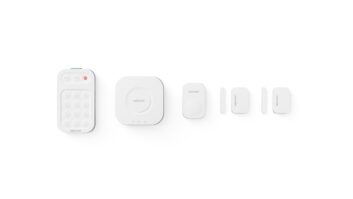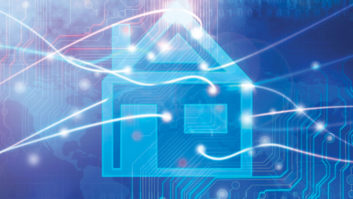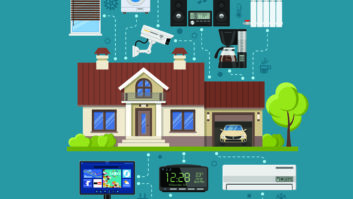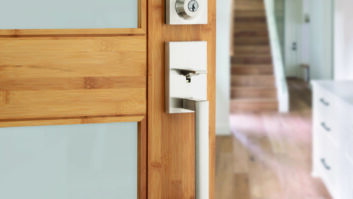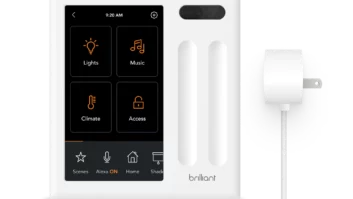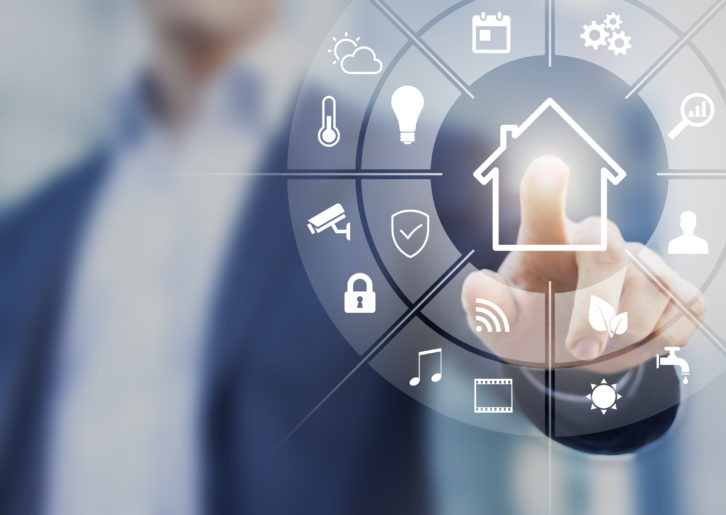
Smart devices have come a long way since their inception and have been adopted by around 46% of U.S. households. Moreover, the number of households with smart devices is expected to grow to 64.1 million, or 48.4%, by 2025.
At a glance, it might appear like a small (and competitive) opportunity for marketing; however, it should also be taken into account that those already with devices might be looking to replace outdated technology or add more to their current line-up.
Smart Device Categories
Nowadays, it seems like there is a smart version of every technology in modern homes, so you will have to understand your customers to help them find the devices that best suit their needs and address their areas of concern. This article will cover five smart device categories you can help your customers invest in.
 Smart Speakers
Smart Speakers
Smart speakers are speakers with the ability to respond to voice commands. Typically, these can connect with other devices or software from their company. Consumers have flocked to these devices for several reasons, and the New York Times surveyed their readers to understand why people purchase smart speakers (specifically Alexa).
The responses included getting quick answers and the ability to turn lights on or off, set announcements/timers/routines, and even check in on loved ones.
Several companies now offer their versions of smart speakers. Some of the top contenders include Apple, who recently released the HomePod 2, the many iterations of Alexa devices from Amazon, and the Google Nest line by Google. Sonos is another smart speaker that uses Amazon’s Alexa assistant.
Smart Safety and Security

We all want to protect ourselves, our families, and our homes. Modern technology has created ways for us to monitor our homes in various ways. Some start right at the door, while others are found within the home. Smart doorbells offer added security via an intercom and camera system with access via a smartphone. There are also keypads that provide a convenient way for residents to unlock the front door instead of fumbling with their keys. Internal systems may include alarm systems, surveillance, and ways to interact with other internal devices.
Safety is not always about preventing or alerting owners about intruders. Instead, it may focus on the hazards many homes contend with. One company is developing a virtual lifeguard system to prevent drowning in private pools by detecting and alerting abnormal changes in the water. Another company is changing the way we monitor the air quality of indoor spaces. The Sensibo Elements Indoor Air Quality Monitor detects changes in the air quality and will alert users when it falls below a certain level, along with tips to address areas of concern.
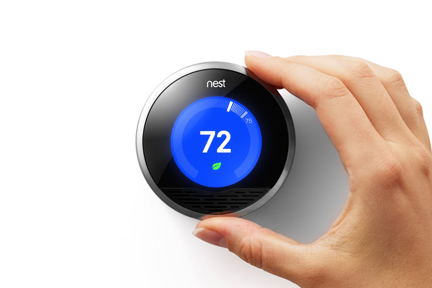 Smart Thermostats
Smart Thermostats
Many Americans are feeling the financial stress of rising energy costs and are concerned about their environmental impact. Smart thermostats can address both of these concerns by reducing the amount of consumed energy.
Individually, families can control the temperature of their homes straight from their devices, while owners of multiple properties can manage all of their locations on one device. Families who are gone longer than expected can reduce the heat until they get home. At the same time, landlords could lock thermostats at a specific temperature to prevent pipes from bursting in the wintertime.
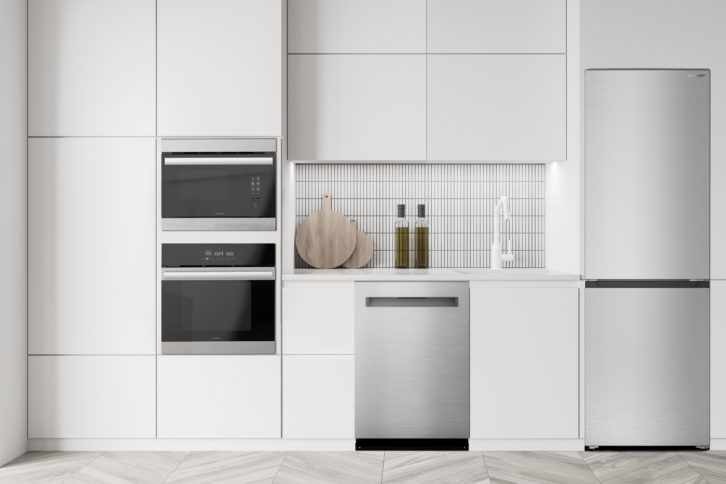
Smart Appliances
Appliances continue to innovate the modern living experience and are used to ease the stress of everyday living. Some modern appliances, especially smart ones, can feel over-engineered and fail to solve the consumer’s problem; for example, a toaster that uses a smartphone app.
But it seems that some companies are addressing an issue many people face – forgetfulness. One appliance, the Sharp dishwasher, tackles this problem head-on by connecting with Amazon’s Alexa, so users can easily ask Alexa to run the dishwasher.
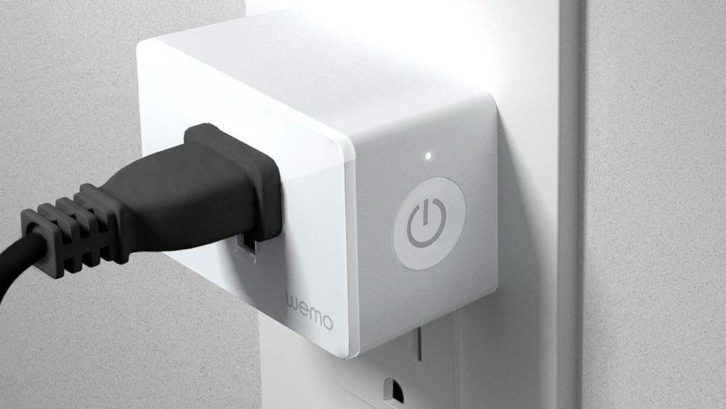
Smart Plugs
Most people’s lives are increasingly busy, which can lead to appliances being left on accidentally. At best, this leads to higher utility costs; at worst, it could cause damage to a home or its inhabitants. Smart plugs give residents peace of mind because plugs can be managed remotely. No more worrying if you left the stove on because you can ensure the plug is turned off.
Additionally, smart plugs can be managed quickly to reduce energy costs. This may be especially important for small businesses like single-member LLCs that are struggling to cope with increased energy prices. Rather than unplugging each device manually when the rates are high, business owners can quickly turn the plugs off using their phones.
Honorable Mentions
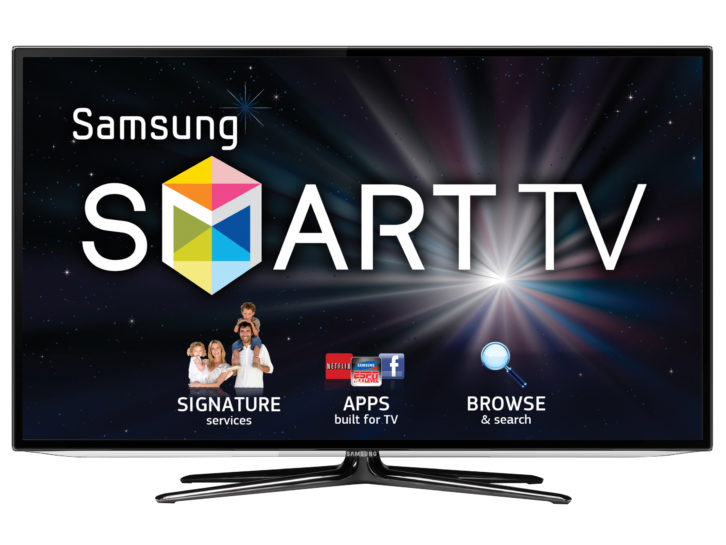 Smart TVs
Smart TVs
There was a time when very few homes owned even one TV, but now most households own multiple televisions. Additionally, there is more entertainment than ever, and much of it comes from the internet. That’s where smart TVs come in. They allow you to access the internet via your television which provides a way to access streaming services or platforms like YouTube and Spotify. Keep in mind there are other items that do the same thing, like Roku or gaming consoles, so while people’s interest in smart TVs may only stem from novelty, it will be interesting to see how this tech grows over the next five years.
Smart Light Bulbs
As mentioned throughout this article, smart devices often have the ability to be managed via a smartphone, and smart light bulbs are another item that offers this feature. The same concern of energy use or turning the lights on before you come home can be addressed with smart plugs and smart speakers.
The Cybersecurity Concerns of Smart Devices
A major area of concern for many users is privacy and security. Smart devices simplify tasks, but this may come at the cost of risk for additional cyberattack vectors.
Unfortunately, there have been instances where security cameras and intercom devices have been intercepted and used to harass owners of the device.
Another common cyberattack is account hacking. Any account with a subscription attached to it could have saved credit card information that bad actors could use to their advantage. What’s more, log-in information could be used to grant access to other accounts from the same person. It is best to look for devices and software that provide robust cybersecurity, like encryption and two-factor authentication.
The Bottom Line
There is a thriving market for smart devices and plenty of competition to fulfill consumer desires. Nevertheless, it is paramount for retailers to understand the needs of smart device users to maximize opportunities. While some consumers enjoy getting the latest techy gadgets, most buyers are looking for a solution to an inconvenience or obstacle they face. The best practice is to look for smart devices that address your customer’s concerns rather than create new ones. Furthermore, new devices should be cohesive with existing pieces of tech within the home. It’s time to rethink these opportunities!
See also: Hubble Connected Showcases Range Of Smart Baby Monitors




